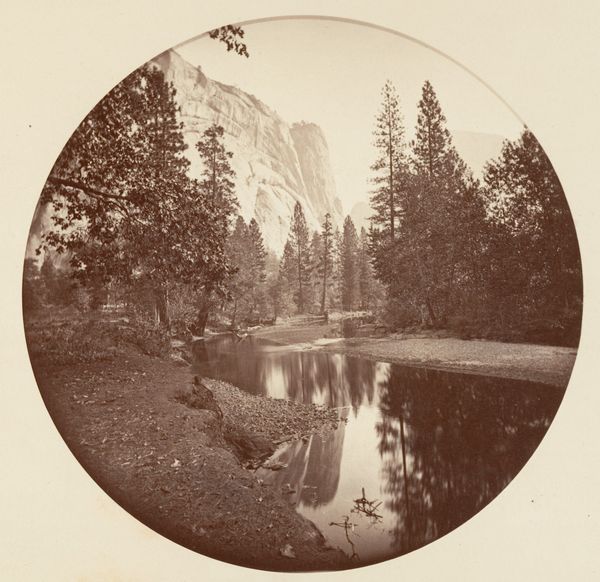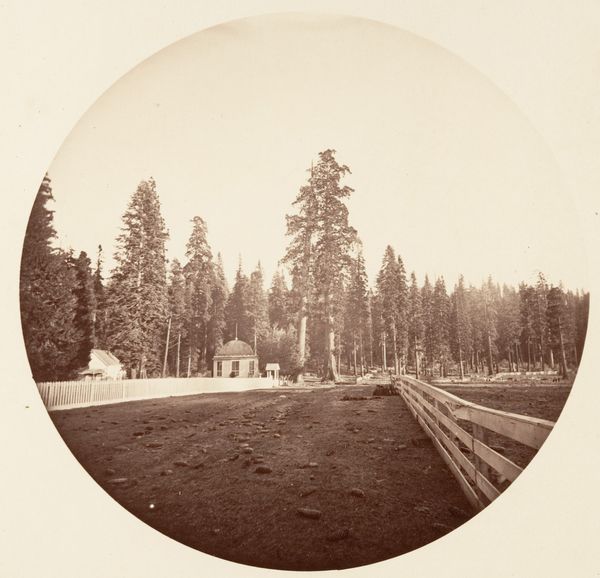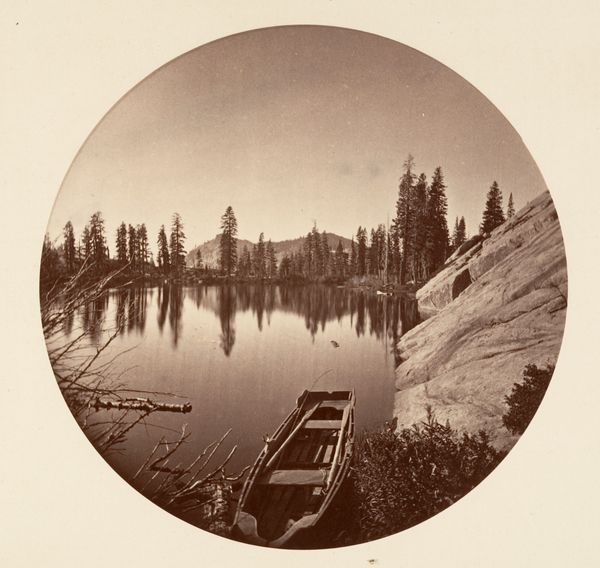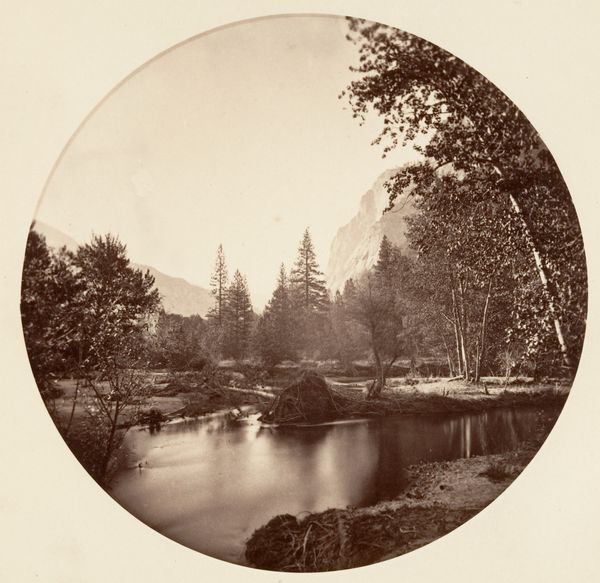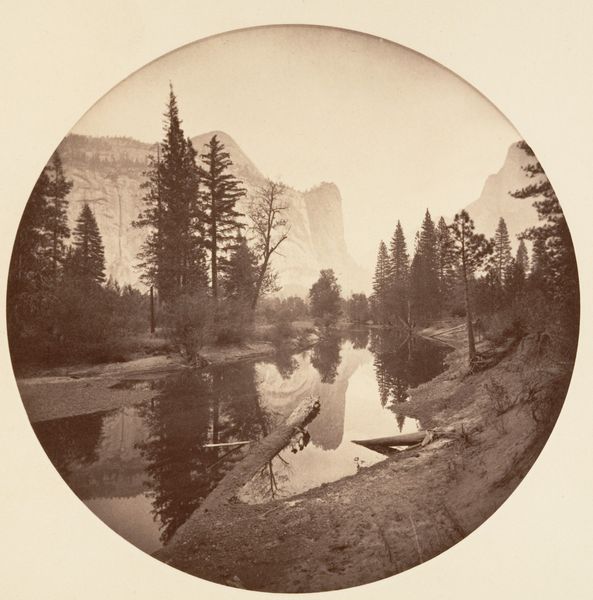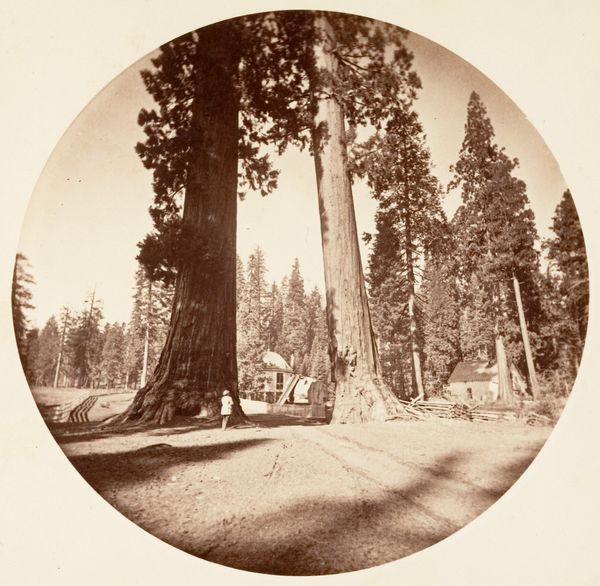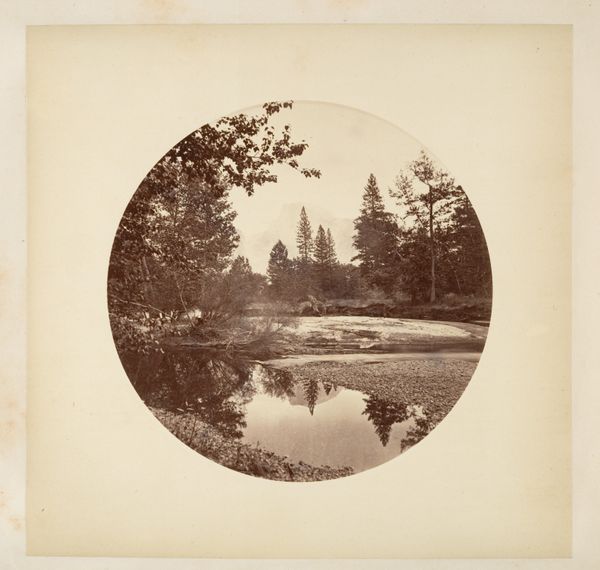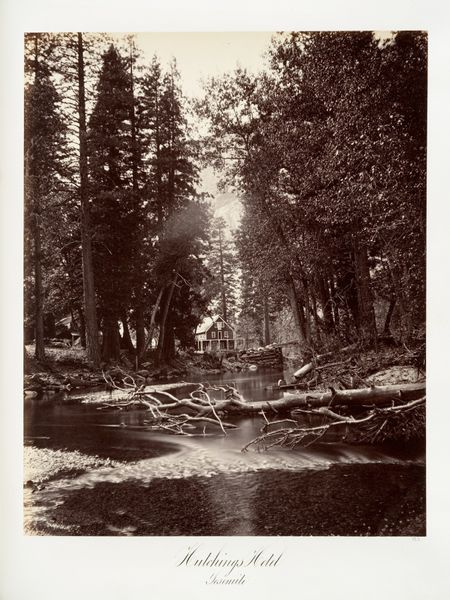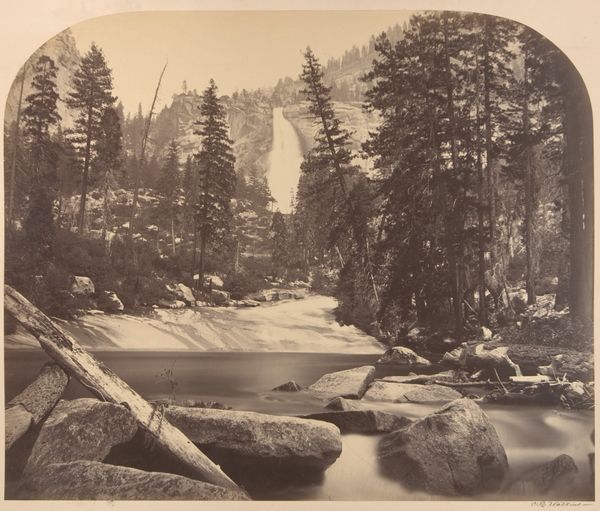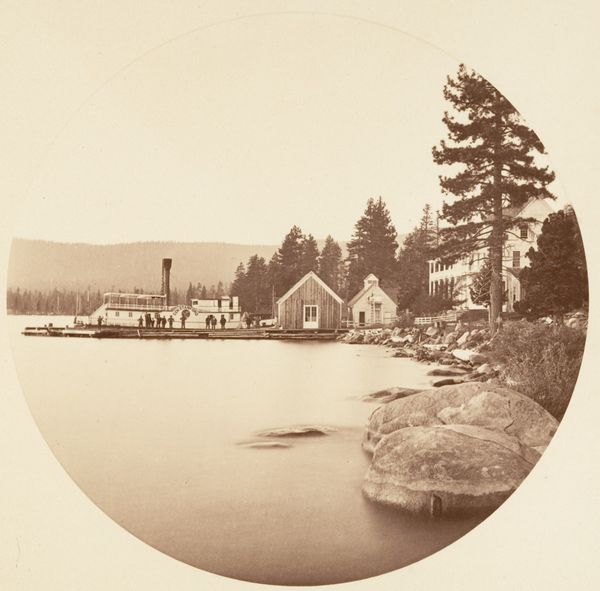![[Yosemite National Park, California] by Carleton E. Watkins](/_next/image?url=https%3A%2F%2Fd2w8kbdekdi1gv.cloudfront.net%2FeyJidWNrZXQiOiAiYXJ0ZXJhLWltYWdlcy1idWNrZXQiLCAia2V5IjogImFydHdvcmtzLzU2MjYyNzljLWUyNDYtNGY3NS1hNjQ2LTk3OTI3NjBiMWQzNi81NjI2Mjc5Yy1lMjQ2LTRmNzUtYTY0Ni05NzkyNzYwYjFkMzZfZnVsbC5qcGciLCAiZWRpdHMiOiB7InJlc2l6ZSI6IHsid2lkdGgiOiAxOTIwLCAiaGVpZ2h0IjogMTkyMCwgImZpdCI6ICJpbnNpZGUifX19&w=3840&q=75)
Dimensions: Image: 12.5 x 12.5 cm (4 15/16 x 4 15/16 in.), circular Album page: 24 x 25.1 cm (9 7/16 x 9 7/8 in.)
Copyright: Public Domain
Curator: Here we have a view of Yosemite National Park, taken sometime between 1876 and 1880 by Carleton Watkins. What’s striking to me is how utterly timeless it feels, an enduring American icon captured in a single frame. Editor: My initial reaction is one of serene stillness, almost meditative. The monochromatic tones and circular format create a sense of contained observation, like peering through a porthole into a pristine world. It's both intimate and grand at once, an invitation. Curator: Absolutely. And that's the genius of Watkins. Working with a large-format camera and albumen prints, he managed to convey the monumental scale of Yosemite. But there is also incredible detail - look at the textures of the bark, the reflection on the water. He invites contemplation. I'd even argue this belongs to the Hudson River School style because it makes an appeal to a landscape with allegorical potential. Editor: You're spot on. This is an albumen print and, to me, that imbues it with even more symbolic weight. This process emphasizes the symbolic significance of the sun and, in this image, how it both veils and illuminates the peaks of the Yosemite Valley. This valley emerges as an earthly paradise of untapped potential, inviting people Westward towards what was then America’s El Dorado. Curator: Do you think there is any significance to that figure on the horizon of the river bank, and what could that symbolize, if anything? Editor: Interesting thought. The image doesn't make it clear, but, the people standing there are tiny amidst that backdrop, emphasizing humankind's transient presence alongside enduring natural splendor, but maybe that human is also Watkins himself! It highlights the complex relationship between nature and society during a period of westward expansion and conservation efforts. We get to witness both nature's bounty and the responsibility it places on the citizens of the young Republic. Curator: Right. The image reflects the evolving dialogue around environmentalism, too. Editor: Ultimately, for me, it evokes that fundamental question we ask: what’s our place within this vast and intricate world? The album print isn't just a beautiful photograph but a mirror, a symbol, inviting us to reflect upon ourselves as a nation. Curator: Well, on that note, it's easy to understand how, to this day, the majestic landscape and artistic renditions continue to fuel the environmental awareness.
Comments
No comments
Be the first to comment and join the conversation on the ultimate creative platform.
